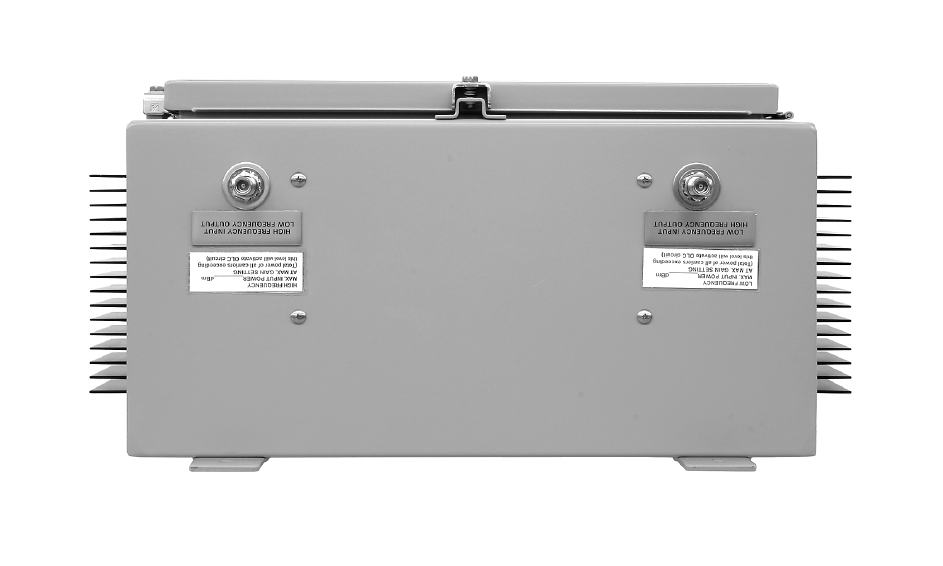User's Manual
Table Of Contents
- Installation and Operation Manual
- Table of Contents
- Introduction
- Installation
- Cautionary Notes
- Pre-RF Connection Tests
- OPERATION
- Signal flow
- System Components
- Field Adjustments
- Maintenance and Repair
- Recommended replacement parts
- Conversion Chart

61-38-05 UserMan page 10 of 38
TXRX Systems Inc. Manual 7-9408-1.2 07/25/05 Page 10
nected at this time. The 3-pin MS style connector
for the backup power system is labeled and is
located on the bottom of the enclosure. A photo-
graph of the bottom of the cabinet is shown in
Fig-
ure 2
.
Connection of RF to the unit is made via “N” female
connectors located on top of the cabinet. These
connectors are individually labeled “High Frequen-
cies IN Low frequencies OUT” and “Low Frequen-
cies IN High Frequencies OUT”. Care should be
used when making connections to these ports to
insure the correct antenna cable is connected to its
corresponding input / output port or the system will
not work. The use of high quality connectors with
gold center pins is advised. Flexible jumper cables
made of high quality coax are also acceptable for
connecting to rigid cable sections. A photograph of
the top of the cabinet is shown in
Figure 3
.
CAUTIONARY NOTES
The following cautions are not intended to frighten
the user but have been added to make you aware
of and help you avoid the areas where experience
has shown us that trouble can occur.
1) Just like the feedback squeal that can occur
when the microphone and speaker get too close to
each other in a public address system, a signal
booster can start to self oscillate. This will occur
when the isolation between the input antenna or
signal source and the output antenna or signal dis-
tribution system does not exceed the signal
booster gain by at least 10 dB. This condition will
reduce the effectiveness of the signal booster and
possibly damage the power amplifier stages.
2) The major cause of damage to signal boosters is
the application of input RF power levels in excess
of the maximum safe input. This can happen inad-
vertently when connecting a signal generator with
full power out to one of the inputs or by a very
strong signal that is far stronger than expected.
The Maximum Safe Power input level for your unit
can be found on the laminated tag affixed to the top
of the cabinet near the RF input/outputs. Following
the pre-installation checks listed below will help to
avoid these two problems.
PRE-RF CONNECTION TESTS
Certain characteristics of the signal distribution
system should be measured before connecting it to
the signal booster. This step is necessary to insure
that no conditions exist that could possibly damage
the signal booster and should not be skipped for
even the most thoroughly designed system. Two
characteristics need to be measured; antenna iso-
lation and input signal levels.
Figure 3:
Top view of cabinet enclosure.










